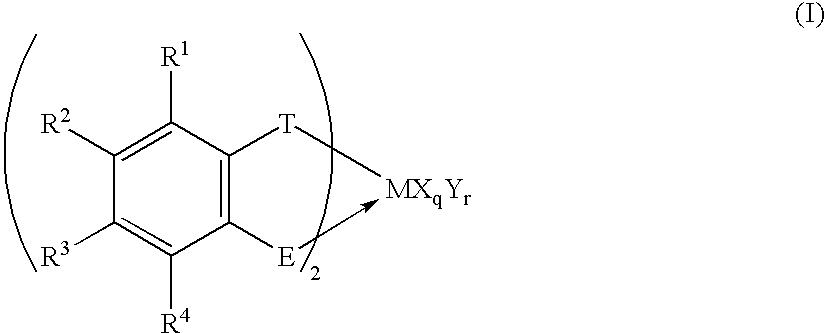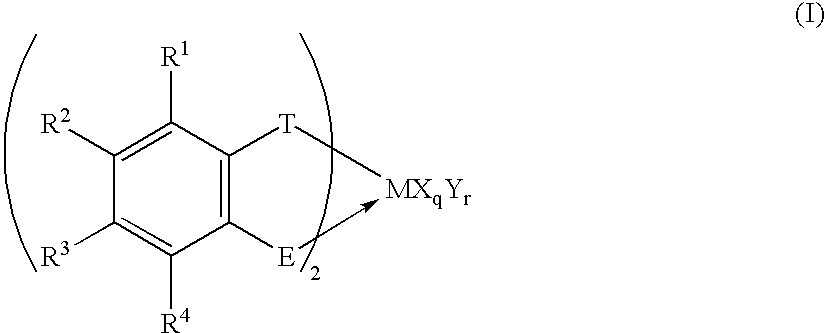Transition metal compound, polymerization catalysts for olefins, olefin polymers and process for their production
a technology of polymerization catalyst and transition metal, which is applied in the direction of catalyst activation/preparation, chemical/physical processes, group 5/15 element organic compounds, etc., can solve the problems of low activity, high production cost, and complicated operation
- Summary
- Abstract
- Description
- Claims
- Application Information
AI Technical Summary
Benefits of technology
Problems solved by technology
Method used
Image
Examples
example 2
[0073] Polymerization of Ethylene
[0074] In a heated and dried autoclave of one liter 400 ml of toluene and 3 millimole of methylaluminoxane were added under nitrogen flow, and this mixture was heated up to 50.degree. C. stirring at this temperature for 5 minutes. Then, 3 micromole of bis (2-diphenylphosphino-4,6-di-tert-butylp-henoxy)- zirconium dichloride obtained in Example 1 was added thereto, and then ethylene was introduced thereinto to elevate the pressure up to 0.68 MPa. Polymerization was carried out in this state for 15 minutes.
[0075] After finishing the reaction, the reaction product was thrown into methanol to filter off a precipitated polymer, and the polymer was then washed with methanol, followed by heating and drying it under reduced pressure to thereby obtain 19.9 g of polyethylene.
[0076] This polyethylene had a melting point [Tm] of 135.6.degree. C. and an intrinsic viscosity [.eta.] (measured in decalin at 135.degree. C.) of 3.17 deciliter / g.
[0077] The melting poin...
example 3
[0082] Example 3
[0083] In a heated and dried autoclave of one liter 400 ml of toluene and 3 millimole of methylaluminoxane were added under nitrogen flow, and this mixture was heated up to 50.degree. C. stirring at this temperature for 5 minutes. Then, 3 micromole of bis (2-diphenylphosphino-4,6-di-tert-butylp-henoxy) zirconium dichloride obtained in Example 1 was added thereto, and then propylene was introduced thereinto to elevate the pressure up to 0.68 MPa. Polymerization was carried out in this state for one hour. After finishing the reaction, the reaction product was thrown into methanol to filter off a precipitated polymer, and the polymer was then washed with methanol, followed by heating and drying it under reduced pressure to thereby obtain 28.3 g of polypropylene.
[0084] This polymer had an intrinsic viscosity [.eta.] (measured in decalin at 135.degree. C.) of 0.20 deciliter / g.
PUM
| Property | Measurement | Unit |
|---|---|---|
| pKa | aaaaa | aaaaa |
| volume average particle diameter | aaaaa | aaaaa |
| volume average particle diameter | aaaaa | aaaaa |
Abstract
Description
Claims
Application Information
 Login to View More
Login to View More - R&D
- Intellectual Property
- Life Sciences
- Materials
- Tech Scout
- Unparalleled Data Quality
- Higher Quality Content
- 60% Fewer Hallucinations
Browse by: Latest US Patents, China's latest patents, Technical Efficacy Thesaurus, Application Domain, Technology Topic, Popular Technical Reports.
© 2025 PatSnap. All rights reserved.Legal|Privacy policy|Modern Slavery Act Transparency Statement|Sitemap|About US| Contact US: help@patsnap.com



